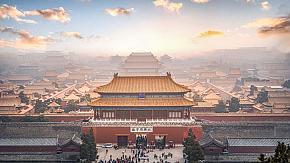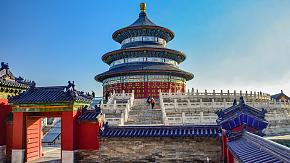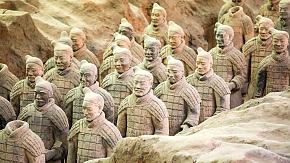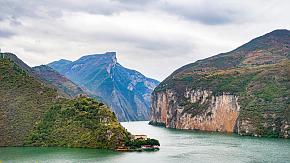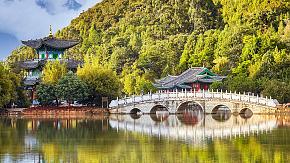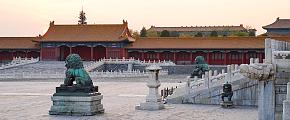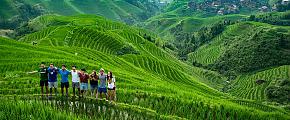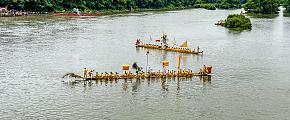10 Best Tourist Attractions to Visit in China 2026
China's vastness as a travel destination means that there is literally no end to the variety of things to see and do in the country. The nation offers a wide variety of exciting vacation options, from relaxing on a cruise through the Yangtze Gorges to touring a modern metropolis to exploring a historic temple. We especially select 10 of the best tourist attractions in China to help you to plan your trip to China, let's check them out now!
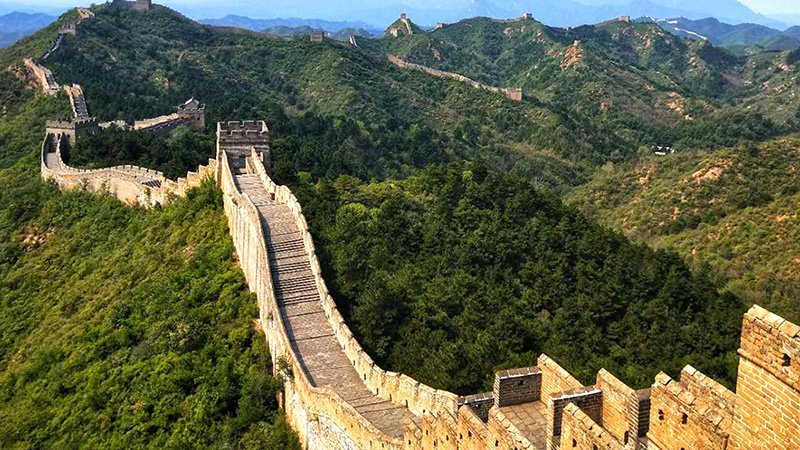
Great Wall of China
The beautiful Great Wall of China (commonly called ''Changcheng'' in Mandarin, which means the "Long Wall") extends over 6,000 kilometers through the eastern Fortresses of Shanhaiguan to the west in Jiayuguan, traversing via Tientsin, Inner Mongolian, Hebei, Ningxia, and of course Beijing (where the most excellent parts of the wall are located).
The wall comprises several parapets and guard posts, measuring around six to eight meters tall yet reaching 16 meters high and large sufficiently in certain spots for five horse riders or ten soldiers to cross. The first defenses on the wall date to the seventh century BC and the best-known portions were built when its numerous parts were brought together in 210 BC.
The most famous stretch of the wall is located northwest of Beijing, close to Badaling Pass. The regions of Gubeikou and Mutianyu, respectively 130 kilometers and 70 kilometers from Beijing northeast, are two more renovated portions worth exploring. A private tour with Odynovo can help you access these places easily.
 The Great Wall of China
The Great Wall of China
Forbidden City (Imperial Palace), Beijing
The Forbidden City, alternatively referred to as the Imperial Palace, is China's most monumental and significant structure. Located in downtown Peking, this iconic building is one of the places to visit for travelers to the nation. The actual Forbidden City was finished between 1406 and 1420, but under the Yuan Dynasty, most of the structure was constructed between 1271 and 1368. This sprawling structure, with several magnificent palaces inside one, was home to 24 emperors of the Ming and Qing Dynasty, whose presence prohibited individuals apart from the royal family members and their entertainers from entering.
This enormous structure, defended by a wall high of 10 meters, with guard towers and a large canal, was built on over 720,000 square meters of area and included portions designated for administrative uses and ceremonious as well as an emperor's private quarters.
Attractions involve the Supreme Harmony Hall, five River Bridges made of granite and gold, a structure high 35 meters where the throne of the emperor is housed, the marvelous emperor's reception hall, the Palace Gallery with its sizable gathering of pieces of artwork as well as many of the Ming and Qing dynasties relics, and more.
The well-known Temple of Heaven (a religious monument among the most considered in the nation from the 15th century) and another notable attraction in the environ of the Imperial Palace.
Terracotta Army, Xi'an
Farmers in the countryside of Xi'an discovered the Terracotta Army when drilling boreholes there in the 1970s. This discovery would turn out to be China's greatest significant archaeological discovery. The finding featured over 8,000 life-size soldiers, 520 horses, 100 carriages, and many other non-military figures, all of which were created to defend the tomb of the First Emperor.
Most of the uncovered sculptures have been meticulously restored and serve as a witness to the emphasis placed here on the emperor and life after death, even though others were seriously damaged over time. One of China's major touristic attractions, the Mausoleum Site Park of Emperor Qing Shi Huang, will give you the fantastic sensation of being face-to-face with this group of warriors and horses as though watching a parade has been going on for generations. You definitely need a professional English-speaking tour guide to make your visit more informative.
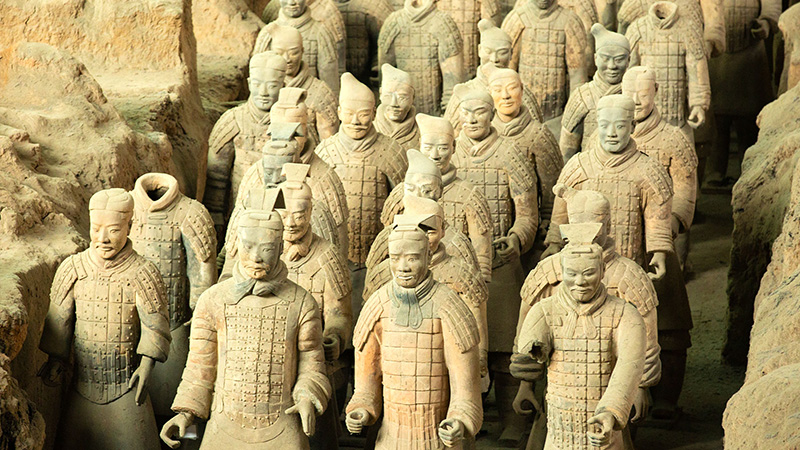 The Terracotta Army, Xi'an
The Terracotta Army, Xi'an
Shanghai's Promenade: The Bund
Shanghai's beautiful riverfront walkway, Zhongshan Road, often called Wàitan, is a stunning example of thoughtful urban design and conservation.
With 52 well-maintained English and French-inspired edifices, among which some are now diners, cafes, boutiques, and art exhibitions, the Bund is renowned for its European atmosphere, owing to the district's background as the seat of the Foreign Colony.
The Oriental Pearl Tower, located on the other side of the Huangpu Jiang River, is 468 meters high, where you will have the most fantastic views of the Bund. Also, don't forget to spend some time in the Yu Garden if you have the chance. It was established in 1559, but the affectionately called Garden of Happiness has brought people joy since it was first designed. To this day, many of the buildings' original designs are still in use.
Research Base of Giant Panda Breeding, Chengdu
Seeing China's cute pandas is a must for anybody traveling to the country. The outstanding Chengdu Research Base of Giant Panda Breeding is situated in the province of Sichuan. It is the most excellent site to observe these amazing animals in a setting that closely resembles their natural environment. Although China's top zoological parks have several good breeds of these intriguing animals, this facility is the perfect spot to encounter them in the country. You may see lots pandas here as they carry out their everyday activities, from grazing to frolicking in the institution's expansive, well-wooded surroundings.
You can see these cute creatures up close and gain valuable knowledge from the various exhibitions to educate visitors on the continuous initiatives to ensure these species survival.
Schedule your excursion to coincide with the pandas' busy eating times at dawn. Even finer, register to volunteer in the fascinating experiential program that will engage you in nourishing and caring for these adorable animals. You could even get to touch a newborn panda.
 Chengdu Research Base of Giant Panda Breeding
Chengdu Research Base of Giant Panda Breeding
Cruising the Li River, Guilin
Guilin, a city of exceptional natural beauty, boasts some of the most picturesque landscapes in China. It is renowned for the Li River, which flows through the town surrounded by dramatic karst cliffs. Thanks to its unique scenery, Guilin has become a favorite destination for travelers from around the world who wish to admire its breathtaking views up close.
Sailing down the Li River is the most extraordinary manner to see the region. The best-known section of the Li River is between Guilin and Yangshuo. Here, across 80 kilometers, the river's water serenely carries you through fantastic caverns and cliffs with exotic names and breathtaking sceneries ideal for couples and photo lovers. Journeys may last a few hours, depending on the river level during different seasons.
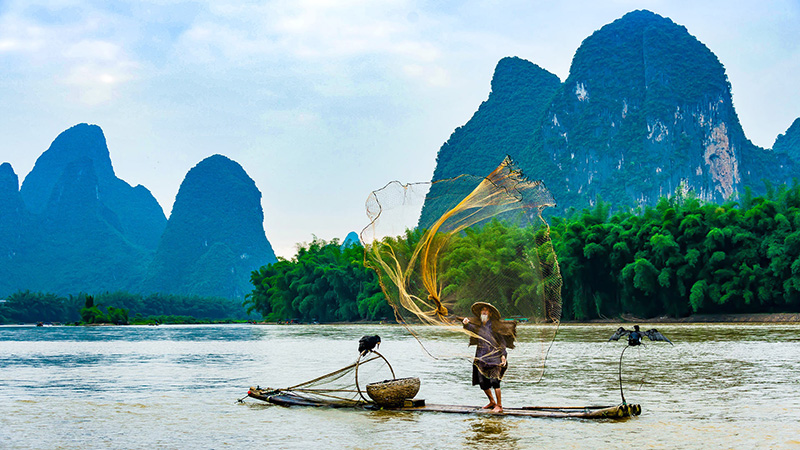 Cruising the Li River, Guilin
Cruising the Li River, Guilin
Yangtze River and Three Gorges
The Yangtze River (in Mandarin, Chang Jiang, which means "Long River") is China's longest and most significant river. Alongside the Nile and the Amazone, the Yangtze River is one of the longest rivers in the world (the third), with over 6000 kilometers in length.
The Yangtze River flows from the west to the east of China through various provinces and crosses cities like Shanghai and Tibet on its journey. With 2,700 kilometers of navigable water, this river has been for over 2000 years the primary channel of transport in China. With approximately 700 streams, it has a sizable drainage basin that makes up nearly one-fifth of the nation's total area and a quarter of its farmland.
Although the river can be seen in many locations across China due to its enormous extent, the stunning Three Gorges Qutang, Wu, and Xiling, a section of 200 kilometers connecting Fengjie city and Yichang city, are by far the greatest well-known for visitors. Here, in a section of landscape as stunning as the Grand Canyon, the river makes its way thru the gorges with its rocky cliffs and high mountainsides, at times crossing furious torrents and perilous shallow waters.
There are various opportunities for excursions, ranging from opulent ferries that highlight the area's ancient monuments and gorgeous locales to strenuous adventurous trips down the most spectacular stretches of the river.
Potala Palace, Tibet
Like many others, the beautiful Potala Palace in Lhasa, Tibet, is a famed historical landmark of China. It was built as a fortification and palace in order to shelter the Master of Guru and has housed several religions' most treasured relics throughout the ages.
The Red Palace, the oldest Potala Palace, was constructed in the late 1700s and featured the most sacred sanctuaries in the whole compound. The walls of the Investiture Hall are adorned with paintings representing events of the previous lives of Dalai Lamas and Tibetan rulers. Magnificent graves (also named "stupas") of many Dalai Lamas are another major attraction in the Red Palace.
The White Palace, which also houses the Dalai Lama's bedrooms, study, and welcome hall, was finished in 1648 and has remained mostly unaltered since the exile of the Dalai Lama from Tibet in 1959. Visit the magnificent Jewel Gardens while in Lhasa. These beautiful gardens, which span 90 acres and are included in the summer retreat of the Dalai Lama, were initially developed in the 1840s.
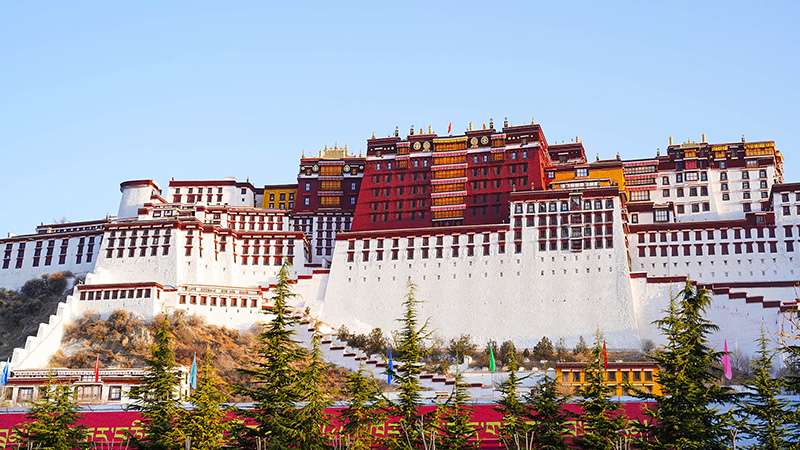 The Potala Palace, Tibet
The Potala Palace, Tibet
Summer Palace, Beijing
Among China's most popular tourist destinations, the opulent Imperial Summer Palace (called Yihéyuán in Mandarin) is surrounded by over 283 hectares of picturesque parks. The palace was constructed around 1153, but the Imperial Gardens were improved by adding an immense lake in the 1400s.
The majestic ''Renshou Dian'', Hall of Benevolence and Longevity, including its throne, and the elegant Great Theater, a private low-rise building constructed in 1891 to gratify the emperor's family's passion for operas, are among the features. During your tour in this ancient location, you might as well have the opportunity to enjoy concerts or entertainment; it still hosts traditional Chinese dramas and local musicians' live performances.
Le Shou Tang, the Hall of Happiness and Longevity, its gorgeous flowers and courts, and the several kilometers of scenic walkways and walking paths are further attractions. Try to spend some hours exploring the Old Summer Palace's remains, which are also believed to be among the nation's most ornate and elegant palaces. Regrettably, colonial soldiers devastated this formerly splendid edifice in the middle of the 1800s.
Classical Gardens of Suzhou, Jiangsu
These stunning gardens are a high priority on any China vacation plans since they are among the world's most significant historical, as shown by their status as a UNESCO World Heritage Site. The Classical Gardens of Suzhou will take you to Jiangsu province, most precisely in Suzhou city, where they are located among the 270 other gardens and more established in the 11th century during the city's phenomenal rise.
The Garden of Lingering, a charming seven-acre setting planned in the 18th century on the location of a park initially constructed under the Ming Dynasty, is the best-known of the renovated gardens that have survived. This garden, one of China's most renowned garden compounds, features a pool, assorted delightful edifices, an artificial hill, an orchard of fruit trees, and a lovely covered pathway. Its walls are adorned with clay tablets inscribed with ancient Chinese characters.
Cang Lang Pavilion, a double-acre garden with numerous distinctive elements, such as a dual arch linking the internal and external parts, is well worth seeing.
If you're planning to travel to China and explore its unique charm with your own eyes, please don't hesitate to contact us, just simply tell us your interests and needs, and one of our travel experts will create a tailor-made itinerary for you within 24hrs.
What Our Clients Say
Explore the latest verified reviews of Odynovo's travel services on Tripadvisor, Google, Trustpilot, Product Review and more trusted platforms.

